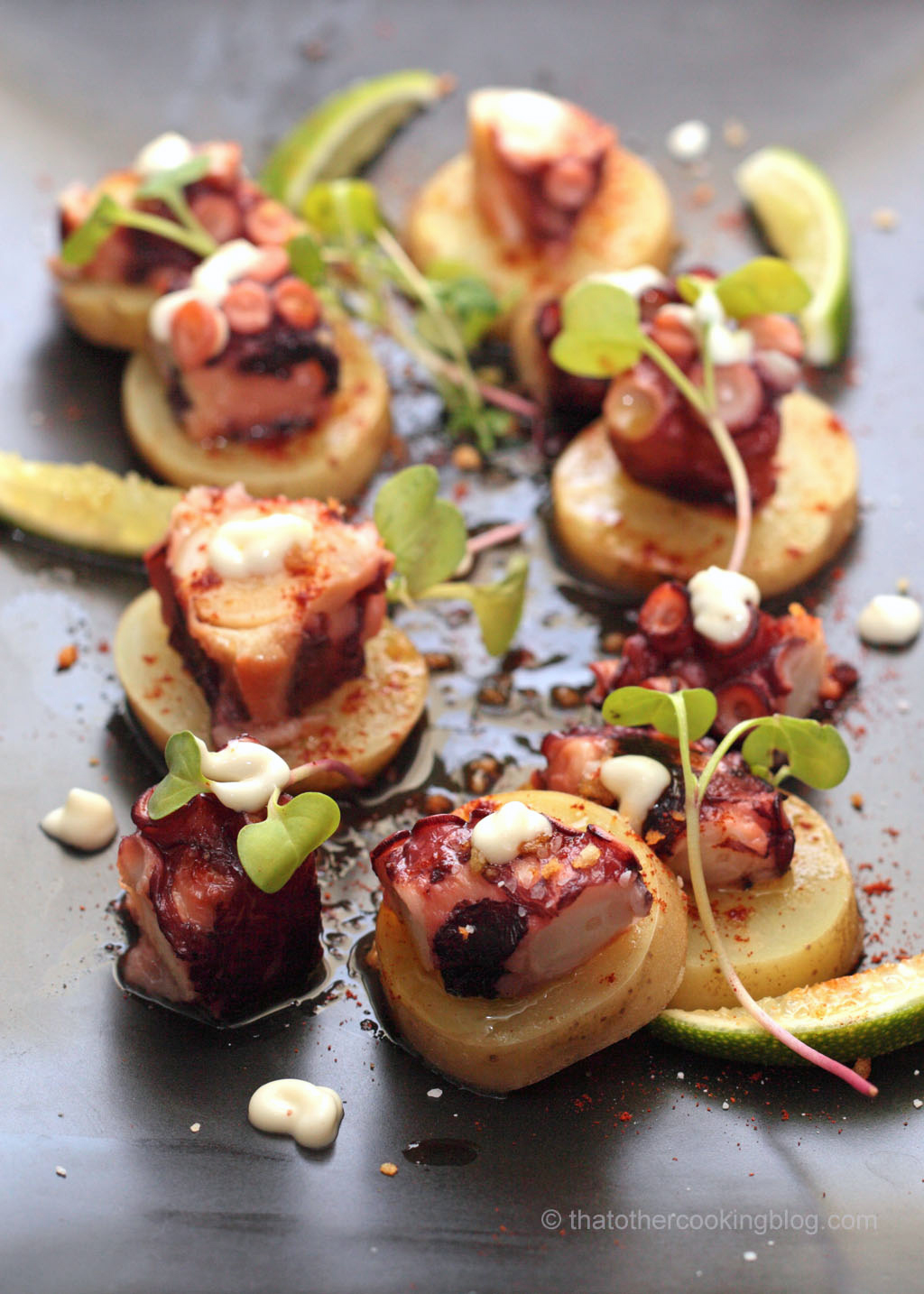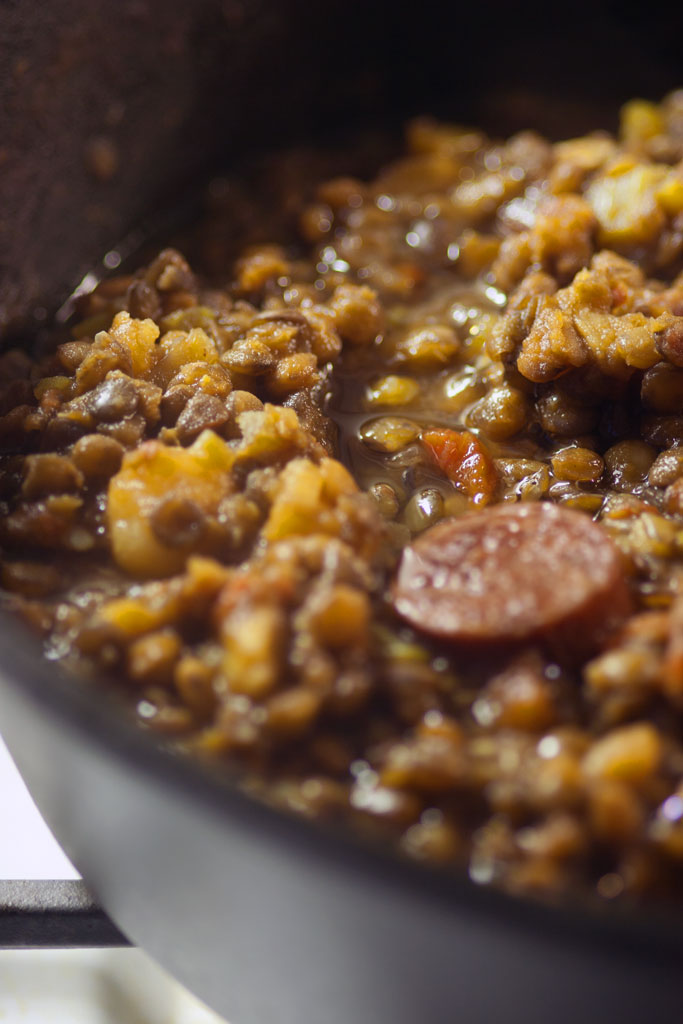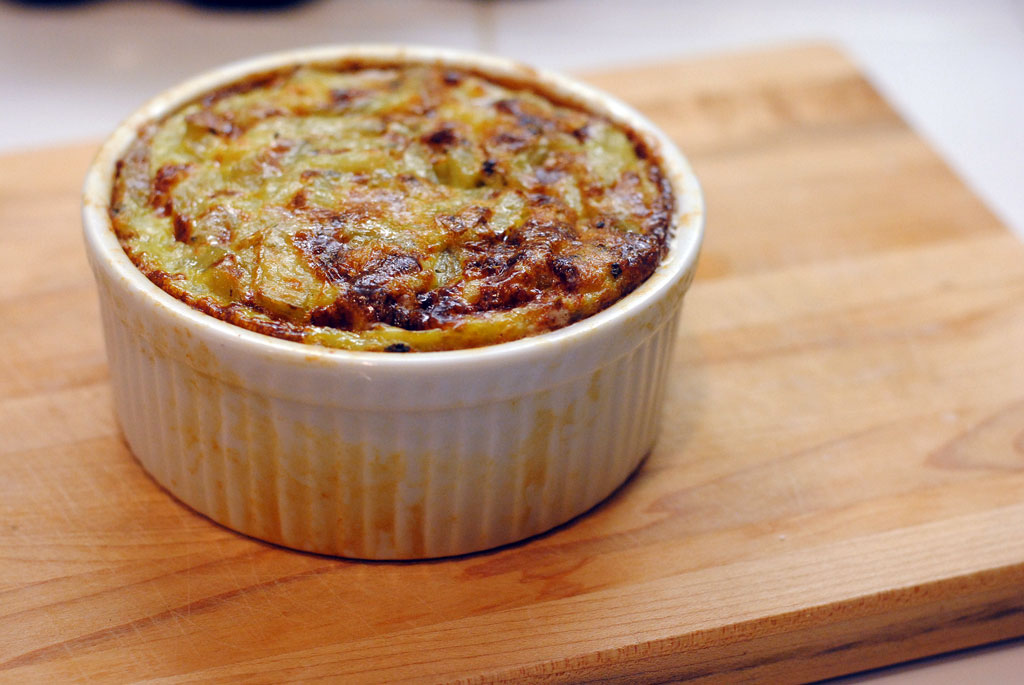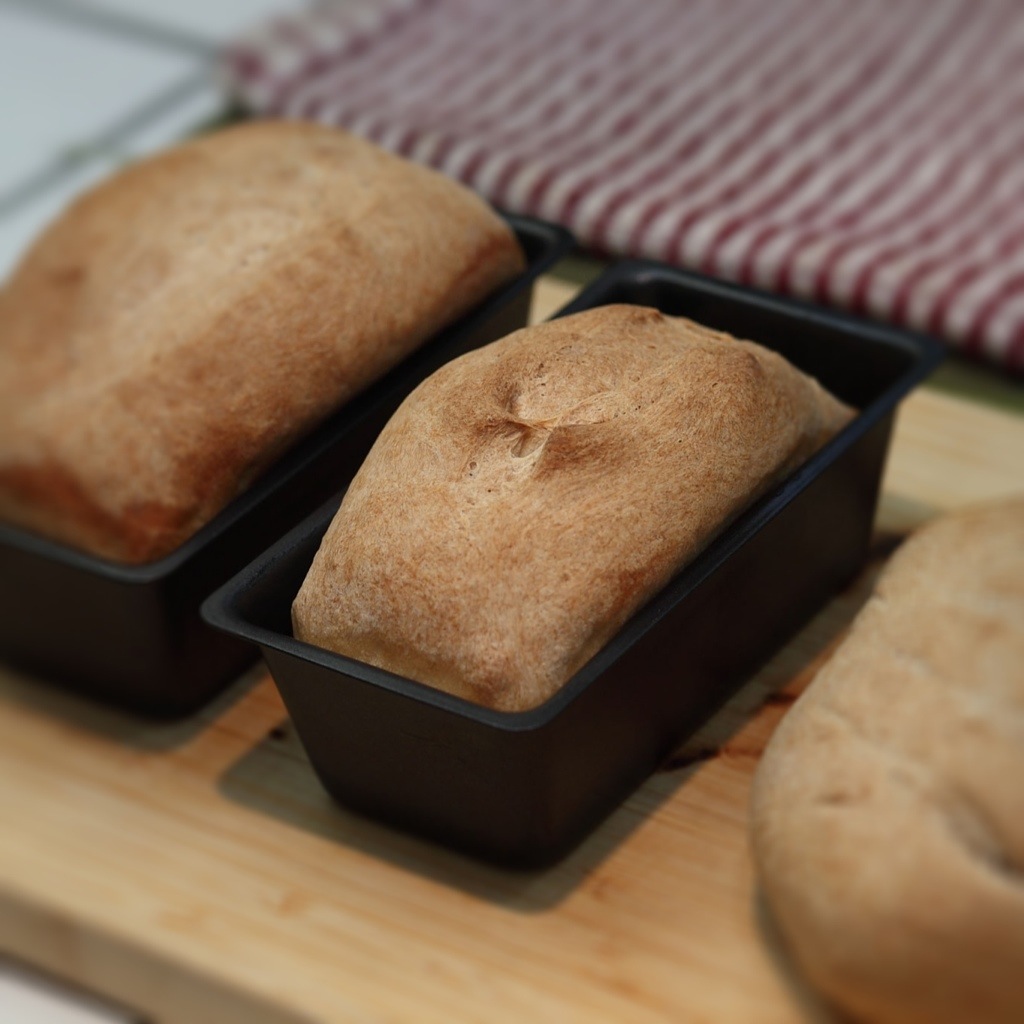Another change of plans. Muffins were on the list last night. Why? Because I love baking and my blogger friend Phuong from My Kitchen of Love added this great post on savory muffins which I found inspiring. I have never baked muffins in my life so I figured these would be a great first but the weather is still incredibly hot in Los Angeles, nearing 80F even at night. Just firing the stove raises the temperature enough to put my stubbornness to test. I broke. I will get back to these awesome savory muffins! They shall be baked in a few months!


Let’s talk about Pulpo a la Gallega. This is one of those dishes that although surprisingly simple, just 4 ingredients, can blow your mind. This galician dish is extremely popular everywhere in Spain, and I’ve had it there almost every time I’ve gone to visit. Its popularity has found its way to other countries, and reached this town of LA. I’ve spotted it at a really nice spanish tapas place in Santa Monica, the name: Bar Pntixo. I love that place. The staff is amazing and the food is really delicious and authentic.
It’s been said that an octopus has the IQ of a 3 year old child or at least I remember reading that somewhere. As impressive as it might sound, it doesn’t really matter to me, this octopus I bought could have had the IQ of Einstein, I’d still eat it ferociously. Octopus is delicious when prepared well and simply. Sushi quality octopus is a treat, raw, thinly sliced with some ginger and soy sauce, amazing stuff, but you get the idea how difficult it would be to eat a thicker cut. The muscles that comprise the octopus tentacles are firm, they need to be cooked for a long time to break them down. Luckily, I have my precious pressure cooker. The right tool for the right job. But don’t get discouraged. This dish can be prepared without one, it will just take 2-3 times as long to get the octopus to the right tenderness level. Let’s go over my version of this dish:

Ingredients (serves 2):
about 400g fresh octopus legs (if you can find a whole specimen, call me)
4-5 small waxy creamer potatoes, fingerling would work nicely
1 tbs pimenton de la vera (sweet smoked paprika)
EVOO + Vinagre de Jerez: Pedro Ximenez (equal parts for a vinaigrette)
Maldon or Kosher Salt to taste
Lime (thinly sliced wedges)
Aioli: see recipe here!
Hong Vit radishes micro-greens for garnishing

Notice how I also have the ingredients for aioli in the above photograph. But I have a separate post for it. We’ll focus on the Pulpo here.
To cook this wonderful octopus I tried something slightly different from previous times. Steam the tentacles in the pressure cooker. By doing so, the flavor loss is minimized this way, something that will happen if the octopus is boiled which most recipes indicate. Fill about an inch of the cooker vessel with water. I then placed my veggie steamer opened at the bottom right over the water and place a second heat safe container over it, that’s where the octopus goes. The point is to keep it away form the water and be able to retain the liquids that will be released (which makes a wonderful octopus stock btw, reduce, salt, lemon, etc, you get the idea). On high heat, seal the pressure cooker, lock the safety and set to 15psi. Once the pressure valve pops, lower the heat to low. The temperature inside will remain stable as long as the valve remains up. If it drops, you need to crank up the heat a bit. Don’t let the pressure cooker release high pressure steam while cooking, this isn’t necessary and will probably end up damaging it. It is a rather quiet cooking method when done correctly. Cook for 1 hour.

In the mean time, prepare all your garnishes, and have them ready. Remember, this dish is extremely simple. Steamed potatoes, sweet smoked paprika, olive oil and salt is the required elements to create this traditional classic. I’ve added a few more element because I believe they complement the dish. I like how the acidity of some lime and the sherry vinegar really enhance the texture and adds sharpness. The aioli goes extremely well with the potatoes and the octopus as well. That hint of garlic is magical… did I just say that? I guess I did.
For the potatoes, it couldn’t get simpler. Slice the potatoes in 1/2 cm thick rounds… about 1/8 of an inch? I have no clue. Just thick enough so that they can hold their shape when lifted by hand. I’m using them as the vehicle for the octopus, it’s unnecessary, but I like how it looks, and makes for a fun dish to eat. Add them to a pot of water, at some salt, a pinch or two, enough to make the water nicely salty. Turn on the stove on medium high heat. The water will eventually boil. The potatoes will be cooked evenly this way. After a few minutes, check for tenderness. These should cook quickly. 5-7 mins. When done, strain most of the water, add cold tap water, to stop the cooking and still keep them in warm water. This will prevent them from drying and keep the potatoes warm until you’re ready to plate.
After 1 hour. Turn off the heat. And open the pressure release valve. Be careful, tons of very hot steam will be released, make sure you are working the valve from atop . This is the not so quiet portion of this cooking method. I would usually take the pressure cooker in the sink and run cold water over it, in a minute or less, the pressure will drop and the cooker will be safe to open, but since I have another container inside of it, I want to make sure I don’t spill the contents that will most likely land on the veggie steamer or find their way into the water below ruining everything. Let’s not ruin everything. That’s bad. Remove the octopus from the cooker. And let it rest for a few minutes. It will be 2 hot to handle otherwise and it is always good to let protein rest a bit before slicing. It will relax and be more tender after a few minutes. Slice the tentacles in rounds about 1/2 inch tall. Reserve.
For plating, simply sprinkle some paprika on a plate. Add a few drops of the vinaigrette on the plate. Place the potato rounds (which you should strain, make no water goes on your plate) over the vinaigrette (this will prevent the potatoes from sticking to the plate and season their underside) . Place the octopus rounds over the potatoes. Drizzle some vinaigrette over them. Add salt to taste, and sprinkle some more paprika on them. Finish with some aioli small dollops. Add the micro greens or some chopped parsley would work nicely as well. Serve immediately. I have had this dish cold as well. It is delicious both ways. And there you have it. Pulpo a la Gallega. Doesn’t get any better than this.

Until the next post. I hope you have enjoyed this one. Take care and thank you for visiting!
Wanna get more sous-vide cooking guides and cool cooking how-to’s in your mailbox? You know what needs to be done!
We never spam. You should only be getting updates when new content is posted on the site. We also respect your privacy. We don’t share your email address with anyone and you can unsubscribe anytime!





34 comments
Beautiful plating! I’ve been meaning to blog Pulpo a la Gallega for a while. I do my octopus without any water in a dutch oven on low heat for several hours, sometimes with additional seasoning, but the pressure cooker method sounds like it achieves the same result under more or less the same theory.
thanks Susan! Really glad you liked it. Do you have any water in a container inside the dutch oven? or is slowly roasting? how many hours? sorry, I’m curious 🙂
No water whatsoever. The octopus releases enough water for it to poach in its own juices. (You can do the same in a sous vide machine.) Low oven (about 200 degrees) for 3-5 hours, depending on the octopus’s size.
yeah that makes sense! it does release a lot of water, flavorful water too. I have used the pressure cooker every time. I want to try the sous vide approach at some point. thanks Susan!
Your plating looks like that of a fancy restaurant! I love to cook octopus sous-vide, but pressure steaming is a good alternative. I’m going to make this too, and will keep it as simple as possible.
Stefan, thanks for the compliment! let me know how long it takes cooking it sous vide please. I’d love to try that.
Octopus needs 3 hours at 85C/185F. See http://stefangourmet.com/2012/02/04/octopus-sous-vide-insalata-di-polpo/
awesome, thanks Stefan!
Very professional as always and your photos are so fantastic – what a fantastic world you have here … and share every post with me.
thank you viveka! your comments are always so sweet, appreciated 🙂
It’s my pleasure … because your post are so full of passion and perfection.
Beautiful shot ¡¡
thanks Oso!!! coming from you, that means so much. Your photography is outstanding in every post. I don’t know how you do it! 🙂 but keep doing it!!
thanks Oso!!! coming from you that means so much. Your photography is outstanding in every post. I don’t know how you do it! 🙂 but keep doing it!!
Fantastic post, Paul, and, as always, your photography is superb. l can’t say that I’ve tried octopus prepared this way, though it sounds delicious. My family hasn’t cooked octopus in decades. I was a young boy the last time. My Italian market sells “baby” octopus and just this Friday I saw a large one among their frozen fish. I’d take a pic for you but they’ve already scolded me for taking photos — twice. 🙂
thank you John! My family never made octopus in any form, and I can’t really remember when was the first time I had, but for whatever reason, i love it hahah. Third time is a charm John, maybe they’ll call the cops, please don’t get caught! hahaah 🙂 always great to hear form you. thanks for stopping by!
I’ve not seen octopus in the seafood markets here but have enjoyed it in restaurants. Love your beautiful plating of this meal.
thank you, Karen!!!
I love octopus and this looks heavenly! Knowing me, I’ll eat the entire plate myself! ha! 🙂 Thank you for sharing. Lovely post…
thank you Anne!
Hmm I really like octopus but I generally avoid dishes where you can actually see the tentacles… however! Your dish even looks good to me and the taste is surely divine!
oh, thank you so much! I’m glad you like the way it is presented. I know certain ingredients are a little graphic and I usually don’t mind that. I think with a little work they can all be made appetizingly looking! 🙂
This looks wonderful. Thanks for the octopus-prep tips!
thank you :)!! and you’re welcome! thanks for visiting today! I hope I can have more posts soon, but I have family visiting and it’s hard to find the time!
Oh, I understand that completely… that’s what summer’s all about. 🙂 Enjoy your time with your family (and good food, I hope)!
thanks!!!! I hope so too, Im roasting a chicken tonight for the family ahahaha, I don’t want to make my beer can chicken, that would totally freak out my mom 🙂
It has the IQ of a 3yo child????
Oh, well . . . like you I would still eat it. Intelligence aside, I don’t have that much sympathy for invertebrates . . .
This looks killer, Paul! Your photos, gosh. If you told me this came out of a restaurant I would be hounding your for the reservations number. You take reservations, don’t you? 🙂
hahahah thanks :)!! I’m glad you like the plating. I will admit I put extra effort in plating of this thing heheh, so glad you liked it!
I love pulpo a la gallega. The recipe I had said you need to put it in hot water then take it out (i can’t remember how many times) then boil it for a certain number of minutes otherwise it will be hard. I’ll have to make it again…
pulpo takes time, there are many myths about how to cook it so it is tender… I believe the only solution is to cook it for a long time. And if you have a pressure cooker, cook it for about 45 mins to an hour. Otherwise… expect a few hours for it to soften
Thats right. I think the only reason why I don’t make it is that it’s pretty easy to get in restaurants here in Spain, so it’s not really something one makes at home… even though my mum does!
yeah, its impossible to find it here in LA, so I was forced by the circumstances hahah
reconnecting my thoughts back! ignore!